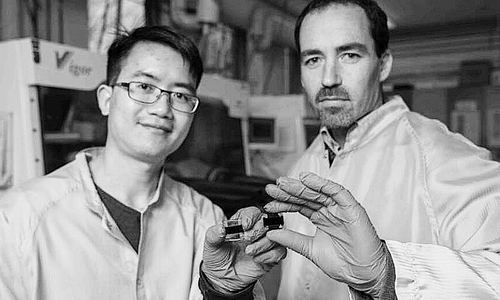The official website of the Australian National University recently announced that researchers at the school have opened up new fields in the conversion of solar cell energy efficiency, and people can take a peek into the future development prospects of the technology. Researchers such as Thomas White and Ph.D. Peng Jun, associate professors of the School of Engineering and Computer Science, have created a new record of 21.6% energy conversion efficiency, which is the highest efficiency achieved in a certain size of perovskite batteries. This means that 21.6% of the sunlight injected into the battery will be converted into energy. Thomas White said that, in contrast, the efficiency of typical solar panels currently installed on the roof is only 17% to 18%. "The research and development of solar cells is mainly based on three points, that is, to make batteries become efficient, stable, and cheap." White believes that "from this point of view, perovskite batteries are the future of solar cells and the focus of next-generation batteries." "As far as perovskite solar cells are concerned, their current energy conversion efficiency is competitive, and the cost is a big selling point. The real challenge now is to make them stable enough to be used on the roof. For example, they It must be able to be used in extreme temperatures for 25 to 30 years. "White said that his ultimate goal is to combine these perovskites with silicon to form a tandem solar cell." Putting these two materials together may be better than a single one. Materials are more efficient. " White and his team have been working on improving perovskite solar cells for many years. Perovskite materials are rich and cheap chemical elements, including carbon, hydrogen, nitrogen, iodine and lead. "Currently 95% of solar cells are made of silicon. It is a very good material, but in the next 5 to 10 years, its efficiency will reach the upper limit." White said, "And to make really good In series solar cells, it is necessary to make the two cells work as efficiently as possible. Because silicon cannot be better, we have been focusing on the other half of the composition-perovskite. " The new efficiency record means that perovskite batteries can now generate 216 watts of electricity per square meter. White said: "When they are small, it is difficult to accurately measure them, and it does not necessarily represent what will happen if the scale is increased. Therefore, our research results are considered to be the smallest scale-one square centimeter The highest is the highest. " In order to achieve this record-setting result, Peng Jun developed a new type of nanostructured material. "A high-efficiency solar cell must be able to produce high voltage and high current at the same time." Peng Jun said, "Although it is difficult to achieve these two functions at the same time, the nanostructure layer in the battery makes it possible. The research results of this team have been independently verified by CSIRO Photovoltaic Performance Laboratory. The laboratory is the only laboratory in the southern hemisphere that has been certified to meet international standards for solar cell efficiency. The research was funded by the Australian Renewable Energy Agency. (Compiled by Ji Hongmei) Solar Flood Light,High Quality Solar Flood Light,Solar Flood Light Details, CN Wuxi Shengda Yukun Energy Development co.,Ltd , https://www.xlite-solarlight.com
Thomas White, Peng Jun and their highly efficient solar cells